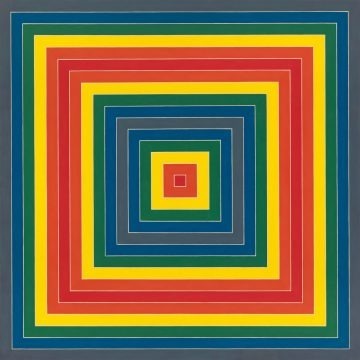Karen Wilkin at The New Criterion:
 The show’s subtitle, “Painting in Color in the 1960s,” can raise expectations of an emphasis on what Clement Greenberg called “post-painterly abstraction” in 1964, when he organized an exhibition with that title for the Los Angeles County Museum of Art; I’ve even heard “Spilling Over” described as “the Color Field show.” (“Post-painterly,” of course, is a nod at the Swiss art historian Heinrich Wölfflin’s classification of “painterly” painting—the broad brushwork and softly modeled forms of the Venetian Renaissance, for example, as opposed to Florentine clarity and crisp drawing. Greenberg updated “painterly” to refer to the loose, layered paint application of gestural Abstract Expressionism, which he referred to derisively as “the Tenth Street touch.”) “Post-Painterly Abstraction” surveyed a new generation of painters who challenged Ab Ex’s tonal modulations and heightened emotionalism—synonymous with serious painting for more than a decade—with thin, radiant expanses of clear intense hues. Later termed Color Field painters, the “post-painterly” artists made color the main carrier of meaning in their pictures and substituted a kind of cool detachment for overt drama.
The show’s subtitle, “Painting in Color in the 1960s,” can raise expectations of an emphasis on what Clement Greenberg called “post-painterly abstraction” in 1964, when he organized an exhibition with that title for the Los Angeles County Museum of Art; I’ve even heard “Spilling Over” described as “the Color Field show.” (“Post-painterly,” of course, is a nod at the Swiss art historian Heinrich Wölfflin’s classification of “painterly” painting—the broad brushwork and softly modeled forms of the Venetian Renaissance, for example, as opposed to Florentine clarity and crisp drawing. Greenberg updated “painterly” to refer to the loose, layered paint application of gestural Abstract Expressionism, which he referred to derisively as “the Tenth Street touch.”) “Post-Painterly Abstraction” surveyed a new generation of painters who challenged Ab Ex’s tonal modulations and heightened emotionalism—synonymous with serious painting for more than a decade—with thin, radiant expanses of clear intense hues. Later termed Color Field painters, the “post-painterly” artists made color the main carrier of meaning in their pictures and substituted a kind of cool detachment for overt drama.
more here.
